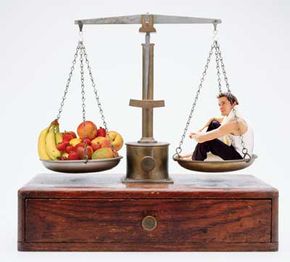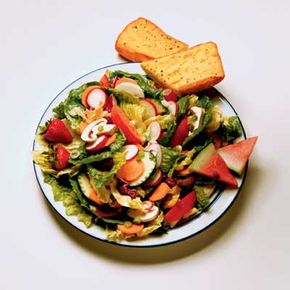You want to get a handle on your weight (and you don't mean a love handle!). But how to do that is what stymies most everyone. While there's certainly no lack of advice to be had, the sheer abundance of it -- and its contradictory nature -- can be immobilizing rather than inspiring. Which of the competing diet plans should you choose; which celebrity or authority should you believe? And which plan makes the most sense for your particular situation and needs?
If you're searching for a magic bullet that will help melt the pounds away and keep them from returning...you've actually come to the right place. You may have thought the previous sentence was going to end with "there's no such thing." And if by magic bullet you mean a solution to weight control that requires nothing more than swallowing a pill, that's how that sentence should have ended.
Advertisement
But if you're looking for a practical, healthy, flexible, achievable, science-based path to lifelong weight control, one that takes a shortcut through the hype and gets right to the heart of the weight-control matter, then you have definitely come to the right place.
In this article, we will introduce you to the new USDA Dietary Guidelines and how they can help you lead a healthier lifestyle. Let's start with a little history.
USDA Guidelines: Then and Now
You're probably familiar with the USDA Dietary Guidelines for Americans, perhaps without even knowing it. The guidelines, which are revamped every five years, are the result of analysis of the latest science about food, nutrition, and diet and their role in good health. Developed by the U.S. Department of Health and Human Services and the U.S. Department of Agriculture (USDA), the Guidelines are recommendations for a healthy way to eat, and they form the basis for federal food, nutrition education, and information programs and for food labeling.
Until now, the Dietary Guidelines have concentrated solely on nutritional guidance -- setting standards for a healthy diet -- and their primary focus was to reduce the incidence of chronic illness and to increase longevity by promoting better eating habits. The Guidelines acknowledged the importance of maintaining a healthy weight and of being physically active, but they did not offer specific recommendations for the purposes of controlling or losing weight.
Feds Weigh In on Weight
With the release of the 2005 Dietary Guidelines for Americans, however, the federal government weighed in on weight control, too. The Dietary Guidelines address it head-on, providing a blueprint for a healthy diet and lifestyle that will help you lose weight and prevent the accumulation of additional pounds as you get older. For the first time, the Dietary Guidelines include recommendations for calorie intake and physical activity in addition to nutrient intake.
You may not think of the federal government as the first or best place to turn for weight-control advice. After all, the government isn't known for being able to control its own appetite (just think of the federal budget deficit). But when it comes to diet and weight control, the government is on the cutting edge. Its recommendations reflect the accumulated wisdom of federal and private research and organizations whose primary purpose is to discover -- and promote -- the best diet for good health. And by all accounts, the healthiest diet and lifestyle are central to weight control and disease prevention.
You're probably wondering: What's new about the USDA Dietary Guidelines? Well, you're in luck. The next section will cover the changes that have been made to the government guidelines.
Advertisement



